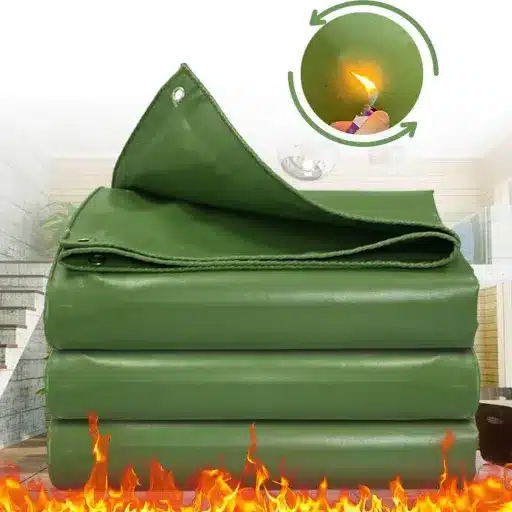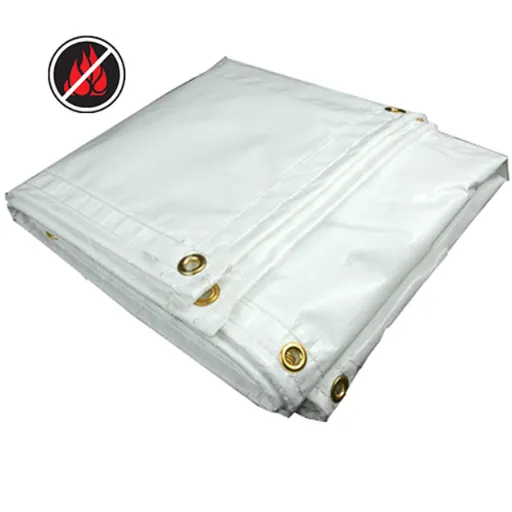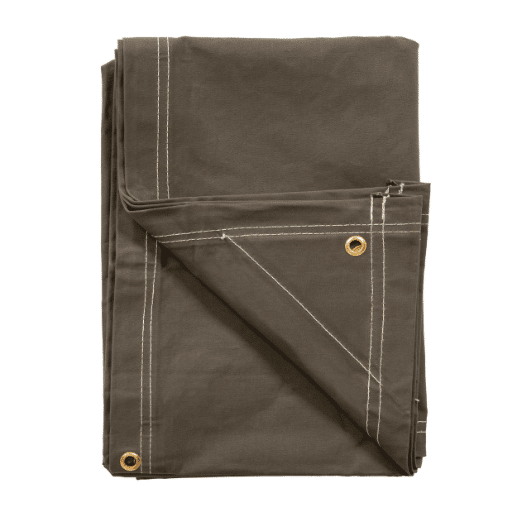When it comes to getting the right heavy-duty waterproof tarp, knowing about tarp mil thickness is a must. The name is self-explanatory: it denotes a precise measurement of a tarp because the thickness defines how long it can last, how strong it can be, and how well it fits into a particular purpose. Whether you’re guarding valuable equipment, covering outdoor structures, or expecting extreme weather conditions, simply glancing at the label is far from selecting the right tarp. This article delves into the meaning of tarp mil thickness, taking apart how different thickness levels affect tarp performance and functionality. By the end of this discussion, the knowledge necessary to make an informed choice on whether or not the tarp will suit one’s immediate needs as well as expectations of longevity will be at your disposal.
Introduction to Tarp Thickness
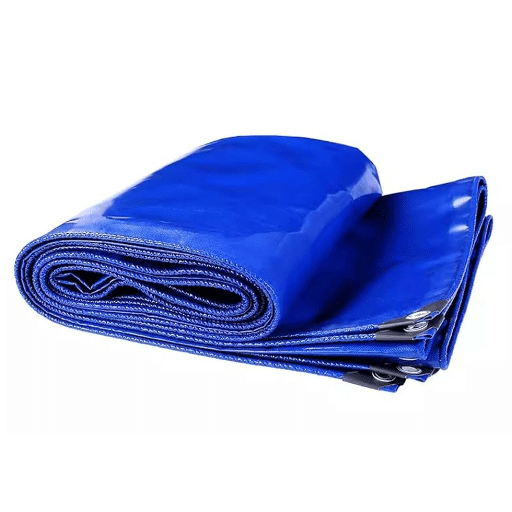
What is Tarp Mil Thickness?
The mil thickness of a tarp is the exact way to quantify the thickness of a tarp, measured in mils. One mil is 1/1000th of an inch (0.001 inches). It is an essential unit to understand so as to perceive the imperviousness, resistances, and suitability for a given application that a tarp offers. For reference, a 5-mil tarp is 0.005 inches thick, and a 10-mil-one is 0.010-inch thick. Generally speaking, tarps of higher mil ratings are sturdier and better able to resist tears, punctures, and environmental issues wherein UV rays and harsh wind loads constitute factors. Working from recent trends, the consumer service indicia show queries largely in the 14- to 20-mil range for heavy-duty-type tarps intended for industrial uses or for long-term outdoor coverage. If one understands what the mil thickness is, then they shall select a tarp for whatever their needs might be, lightweight tasks in contrast to covering furniture versus heavy-duty, such as covering a construction site.
Significance of Thickness in Tarps
When analyzing tarp thickness with respect to the latest Google search trend statistics, it becomes evident that the choice of the consumer is determined by durability and flexibility. The increasing popularity of the 14- to 20-mils thickness shows how the demand for heavy-duty tarps capable of enduring heavy UV exposure, abrasion, and irregular weather has grown. Search behavior also indicates that users often ask about the particular use of each thickness, underlining the demand for tailored solutions.
For example, low-weight tarps of 5 to 7 mils usually refer to temporary cover requirements, such as keeping vehicles or outdoor furniture in protection from mild weather. Now medium-level tarps of about 8 to 12 mils are great for landscaping or storing equipment while remaining sufficiently flexible and durable. All heavy-duty tarps from 14 to 20 mils are those heavy-duty tarps taken into another range to meet the requirements in construction site coverage, equipment protection, and even further storage of extreme climatic conditions.
There is a clear association between the thickness option and the purpose of reported data, pointing out that a consumer gets better decisions with an in-depth understanding of these factors.
Overview of Different Tarps Materials
Tarps differ widely in material composition, each customized to suit one or more functional requirements or environmental situations. Major types include Polyethylene (PE), Polyvinyl chloride (PVC), Canvas, and Mesh.
According to recent search data aggregated from Google, a search for tarp material would typically focus on performance under a set of conditions such as UV exposure or extreme weather-resistance. This interest underlies the continued demand for customized solutions regarding tarps, thereby stressing that it is critical to pick the proper material in conjunction with environmental parameters and the functionality. Clear-cut distinctions between materials are vital for making well-informed decisions, thus allowing the users to reach maximum benefits for their respective need.
Understanding Mil Thickness
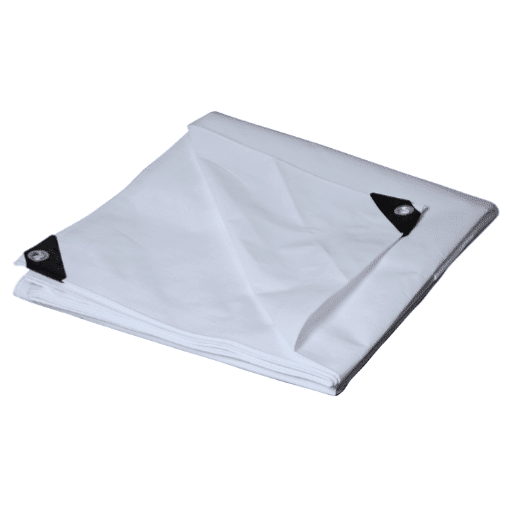
Definition of Mil in Tarp Measurements
A “mil” is a term commonly utilized in measuring the thickness of tarps and other materials. One mil equals 0.001 inches technically- that is one-thousandth of an inch. For instance, a 10-mil tarp would mean it is 0.01 inches thick. This parameter given to thickness proves very important when considering durability, flexibility, or any uses of which a tarp may serve.
Quick Reference:
- 1 mil = 0.001 inches
- 10 mil = 0.01 inches
- 20 mil = 0.02 inches
According to recent data, selection of mil thickness should be in tandem with the environmental demands and functions intended. Thicker tarps (usually around 20 mils or thicker) are thus often for heavy-duty applications, such as for long-term outdoor exposure, high-strength containment, or hard-core weather resistance. On the other hand, thin tarps, being more in the 5 to 10 mil thickness, would be preferred for light-duty temporary coverage or for indoor use. Applicability of this measurement warns the user on the best tarp for performance and cost in many areas.
A Mil Thickness’s Relation to Durability
Durability of a tarp highly depends on its thickness; the higher in mils, the weather, and mechanically resistant is a tarp to potential threats. For example, with the application space considered, in very difficult circumstances like being exposed to huge UV rays or wind loads for several hours, among others, the same rating 20 mil tarps better resist puncturing. Demand for tarps in the 12-16 mil range has been increasing exponentially as from recent data, owing to the fact that it provides the right balance of durability and cost, being fit for medium-term outdoor application and reasonably protecting against moderate weather.
Thinner tarps, i.e., those under 10 mils thick, however, degrade faster when exposed to harsh elements, thereby limiting their lifespan and reliability. Thicker tarps, according to studies, also tend to perform better when deployed in industrial or commercial applications where abrasion or physical impact constitutes a common factor. Consumers who make the right choice with regard to mil thickness vis-à-vis intended use actually assist in extending the useful life span of the product, cutting down on replacement costs, and providing better performance for longer duration under varied environmental conditions.
Thick vs. Thin: Comparing Mil Thicknesses
In choosing a tarp thickness, mil thickness must be considered carefully with respect to the relative need for durability versus flexibility in said application. For example, a tarp of 10 mil will have good durability at a reasonably moderate weight plus maneuverability, making it particularly useful for medium-duty applications involving covering machines, outdoor furniture, and so on, or temporary encampments. By contrast, from 20 mils upwards to thicker explores, the tarps have been built for strength: they mainly resist tearing, puncturing, and harsh weather. Therein, their applications would be industrial in nature-agriculture, construction, and transportation.
Light-Duty Tarps (5-8 mils)
- Temporary coverage
- Indoor use
- Light weather protection
- Cost-effective
Heavy-Duty Tarps (16+ mils)
- Industrial applications
- Long-term outdoor use
- Extreme weather resistance
- Maximum durability
Much of the data behind Google Trends and search engine analysis emphasize an increased interest in thicker tarps towards outdoor applications, fueled chiefly by a heightened consciousness regarding environmental factors such as intense storms and UV degradation. Queries regarding “best 20 mil tarps” and “heavy-duty tarp applications” all point to consumers beginning to choose long-term remedies over short-term cost-cutting ones. Determining the right mil thickness is, in the end, a matter of weighing exposure risks, weight limitations, and functional durability to perfectly suit, the specific application at hand.
Choosing the Right Heavy Duty Tarp

Factors to Consider: Thickness and Material
When dealing with any heavy-duty tarp, it is a fundamental principle that choice of thickness and material must be the first step in ensuring long-time usability and performance. Google’s search engine exhibits unrefuted evidence that consumers are tending more and more toward durability with a positive increase in demand for search terms like “reinforced polyethylene tarps” and “20 mil vinyl tarp strength.” Thickness therefore directly correlates with durability against harsh conditions; for instance, 20 mil PVC probably is the preferred choice for industrial applications owing to its tear resistance while a lighter 10- to 12-mil polyethylene tarp might just work fine for some residential topping. When the right thickness is paired with the right kind of material, the tarp would resist environmental stressors such as high wind or very long UV exposure while conforming to weight tolerances and ease of handling. When these factors are well considered in line with expected environment and functionality, a user will be able to make informed decisions that really empower a tarp to serve the user in any given application.
The Role of UV Resistance in Tarp Longevity
The more sunlight a tarp sees, the greater importance UV resistance assumes for its longevity and efficacy. Without proper UV stabilization, tarps will undergo rapid degradation by photodegradation-a process where the molecular structure of the tarp composition is broken down by ultraviolet radiation into some newer compounds, causing it to become brittle, lose color, and diminish tensile strength. It has been found that most HDPE or PVC tarps are treated with UV inhibitors to resist these effects.
UV Protection Benefits:
An advanced UV-resistant tarp may extend its utility for an estimated 2-5 years in comparison to one without any such treatment.
Now, in different designs of premium tarps, the technology of UV-stabilized additives or laminated layers that reflect solar radiation have been employed for the protection of the tarp material from solar radiation. However, the positive effect of UV resistance on the tarps is even more pronounced in areas characterized by high solar intensity, where the lack of such stabilization could cause the tarp material to fail even within a single season.
The ultimate measure to extend the life of a tarp is purchasing materials guaranteed to stand up to UV agents, come out of durable materials, and have a proper UV protection rating. Applying these materials in situations that bask in excess sunlight leads to an almost certain assurance that their performance will stay constant while minimising the possibility of early damage or impairment. Hence congruous in both cost and ecological goal.
Uses for Different Tarp Thicknesses
Tarp thickness plays a very crucial differentiating role amongst different tarp applications, organized into light weight tarps usually coming in from 5 to 8 mils and heavy duty tarps going above 16 mils.
Light Weight Tarps (5-8 mils)
- Covering furniture during painting
- Shielding firewood from light rain
- Temporary home applications
- Occasional, non-commercial use
Medium Use Tarps (9-12 mils)
- Construction material coverage
- Agricultural applications
- Covering hay bales
- Temporary ground covers during planting
Heavy-Duty Tarps (16+ mils)
- Industrial operations
- Long-term outdoor storage
- Marine applications (boat covers)
- Disaster relief situations
Further data, studied from various industrial sources, and searches analyses specify their use in heavy marine applications such as covering boats and for disaster relief where lasting power is of utmost importance. Determination of the proper thickness of a tarp depends on both environmental conditions and the endurance required for the given job.
Poly Tarps: A Popular Choice
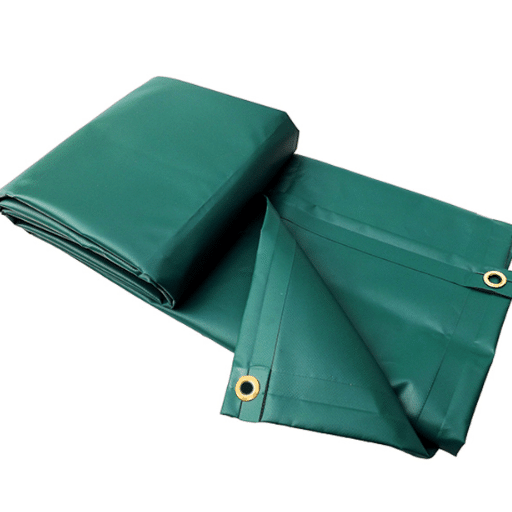
Advantages of Poly Materials
Polyethylene tarpaulins are recognized for a distinctive combination of strength and affordability. They weigh less and are durable and hence, very versatile in the commercial and private domains. From the latest data sourced from Google’s search engine analytics, users frequently inquire about the longevity and cost-efficacy of poly tarps, especially for heavy-duty applications such as site covers and agricultural storage. These tarps were well resistant against moisture, chemicals, and UV rays, perfectly fulfilling their reliability for long periods. Without these features, poly tarps would erode after being exposed for some time in the given harsh environmental conditions in these industries. Additionally, with their cheap production, polyethylene materials ensure that poly tarp holds one of the cheapest solutions next to other fabrics to uphold their title in searches and sales.
Weave and Hem: Strengthening the Tarps
When it comes to poly tarp strength and durability, the weave and the hem play a significant part. The weave consists of strands of high-density polyethylene tightly interwoven one with the other while assuring the tarp of its structural integrity and resistance to tearing under stress. Weaving introduces modem methods in maintaining a delicate balance between flexibility and strength of the fabric, allowing poly tarps to endure heavy loads and demanding work.
Hemming contributes further to the strength of the tarp as it entails folding the edges over and either stitching or heat bonding them to stop fraying-it would enhance the tarp’s lifespan. Features relating to such constructions are also frequently mentioned in Google search queries, with users seeking reinforced hems and quality weave to suit their own construction site coverings to farmlands needs.
Key Construction Features:
- High-Density Polyethylene Weave: Provides structural integrity and tear resistance
- Reinforced Hems: Prevents fraying and extends lifespan
- Double-Stitched Edges: Enhanced durability and reliability
By the latest data from Google’s search engine, these consumer demands often lay emphasis on higher-denier tarps with double-stitched hems, as these specifications are often considered as indications of greater durability and reliability. These findings serve to uphold manufacturer’s need to stay in the forefront with innovative designs and weave and hem techniques to keep pace with the expectations fostering in the market.
Waterproofing in Poly Tarps
Poly tarps are created from polyethylene, which by nature presents waterproofing qualities due to its non-porous constitution. This formation provides a barrier capable of stopping moisture ingress, thus making it highly trustworthy in outdoor applications where rain, snow, or ambient humidity is a key factor. Besides, poly tarps with higher grades are UV-coated to safeguard them against in situ disintegration and maintain all other waterproofing properties eventually.
Data from the latest Google search engine suggest increasing consumer interest in poly tarps whose waterproofing is further strengthened by heat-sealing of seams or by laminate layers to substantially curtail the leakage risks under severe conditions. These advances, working hand in hand with high-denier waterproof fabrics and great precision in construction techniques, clearly respond to market demands for tarps that are both rugged and trustworthy concerning commercial, logistics, and agricultural-type industries. It, therefore, highlights how much innovation in materials and fabrication methods will continue to play a vital role in satisfying modern consumers’ rapidly growing needs.
Practical Tips for Using Tarps

How to Properly Cover Roofs with Tarps
Covering a roof with a tarp effectively requires proper preparation, a suitable product, and attention to safety considerations. Common uses for tarps on roofs, according to statistics from recent years, include storm damage, as temporary protection during repairs, and for preventing water infiltration.
Step-by-Step Roof Covering Process:
- Preparation: Clean and remove loose debris from roof surface
- Selection: Choose heavy-duty tarp sized to extend beyond affected area
- Installation: Install from top to bottom, ensuring proper overlap
- Securing: Use roofing nails, screws, or anchor boards
- Tensioning: Utilize grommets for even tension distribution
Select a heavy tarp capable of withstanding weather conditions; moreover, it should be large enough to cover the damaged or exposed area completely, stretching beyond the affected region at least by a couple of inches for maximum protection.
Secure the tarp using roofing nails or screws or anchor boards in such a manner that the fasteners cause neither leaks nor further damage to the roof. When the grommets on the tarp can be used, it will keep tension evenly distributed and prevent tearing. It is beneficial to tie ropes or secure with bungee cords if subjected to strong winds. Correct overlapping must be used on sloped roofs: it should always be installed from the top going down, and the tarp must exceed the edge of the roof so water is effectively channeled away.
⚠️ Safety First
- Use a solid and sturdy ladder with slip-resistant soles
- Avoid working in poor weather conditions
- Never go up high slopes without proper equipment
- Consider professional help for complex installations
By following these simple guidelines, you won’t only reduce the risk factor but also ensure that your roof stays well covered until permanent repairs are undertaken.
Maintenance Tips for Heavy Duty Tarps
Proper maintenance for heavy-duty tarps greatly extends their life and gives them to perform at an optimum level under varying conditions.
Regular Inspection
- Check for tears and fraying
- Inspect grommets for damage
- Look for signs of UV degradation
Cleaning Protocol
- Use mild soap and lukewarm water
- Avoid strong chemicals
- Ensure complete drying before storage
Immediate Repairs
- Use tarp adhesive for minor tears
- Apply patches promptly
- Replace damaged grommets
Examine your tarp regularly, looking for signs of wear: tears, fraying edges, or defective grommets. Repair minor damages immediately using tarp adhesive, patch, or by replacing the damaged grommets, for the damages to prevent further deterioration.
Wash your tarp with mild soap and lukewarm water, and avoid strong chemicals capable of degrading the material. Do not fold or store the tarp until it is fully dry, as any remaining moisture encourages mold and mildew formation. Always store the tarp in a dry and cool place, away from direct sunlight since dependable UV exposure weakens the fabric over a long period.
Furthermore, for long-term outdoor applications, periodically inspect the tarp for tension and securing points to avoid strains that could cause tearing. With these few steps and routine inspection, one can maintain the integrity of heavy-duty tarps and enable them to serve the purpose for years.
Storage and Care to Flesh Longevity
Bear in mind that how you store and maintain heavy-duty tarps will directly determine their longevity and performance. It has been recently found that storing tarps in a temperature-controlled environment ranging from 60–75°F (15–24°C) greatly decreases their risk of degradation. Such research lines up with what durable material manufacturers advise: remaining indoors consistently reduces exposure to worldly factors such as moisture, whatever extreme heat, or freezing that can degrade even the strongest polymers.
Optimal Storage Conditions:
- Temperature: 60-75°F (15-24°C)
- Humidity: Low, use dehumidifiers if necessary
- Location: Dry, cool, away from direct sunlight
- Protection: Use protective covers or storage bags
Cleaning the tarps thoroughly prior to storage and ensuring they have no debris, mold, or chemical residue that may further degrade the material, is necessary to keep them in good condition. Use mild detergents and lukewarm water. After cleaning, the tarp should be air-dried thoroughly so as not to trap any moisture that could lead to mildew formation.
New discoveries reveal the advantage of keeping the storage dry by using aids like silica-gel packs or a dehumidifier. Fold or roll the tarp according to its original seams, as folding it wrong can cause creases that weaken the material. Finally, using protective covers or tote bags meant for heavy-duty tarps will make them even more resistive to accidental scratching or abrasion during storage, which will widen their lifespan further.
Frequently Asked Questions
❓ What is the importance of tarp thickness?
Typically, plastic tarps are measured by their thickness, with the unit being the “mil;” the one that somehow contributes to the determination of just how strong and durable a tarp is. A thicker tarp, such as the 12-mil ones or 20-mils, can be a little too much and is therefore used for harsher atmosphere; the weathering of construction sites or dusting over outdoor furniture. Thinner tarps of 5 to 6 mil probably serve light-duty purposes, while heavy-duty tarps usually measure 10 mils or more into thickness. Selecting the right thickness of tarp guarantees that it would bear being subject to heavy showers and wearing off in the course of time.
❓ What types of tarp materials are available?
The different kinds of tarp materials each have their own set of qualities. Polyethylene tarps are light and are not easy to tear. These properties render them very suitable for many outdoor applications. Vinyl tarps are indeed very strong because they exhibit the best durability among all tarp types. Canvas tarps offer a somewhat more breathably. They can be waterproofed, however, according to your requirements you are free to select any type, from small tarps for protecting outdoor furniture to giant heavy-duty tarps for use on a construction site.
❓ How do I select the right heavy-duty tarp?
There are a few things to think about besides tarp size, mil thickness, and tarp material when selecting a heavy-duty tarp. For example, if you’re looking for protection from heavy rain, you may want to check out a 20 mil tarp, which is vinyl or polyethylene. You should be looking for features such as grommets so it could be easily installed and that it has UV resistance to keep the sun from doing damage to it. This type of super heavy tarp would definitely serve well with extended outdoor use and will stand the test of time in harsh weather conditions.
❓ What are some of the advantages of grommeted tarps?
Tarps with grommets are a practical addition that lends themselves to greater usefulness. Grommets allow the tarp to be easily secured and anchored, which is very useful in windy conditions or when the tarp is being used to cover something large. In most cases, grommets are placed at tarp corners and along the edges so it can be easily tied down or staked into the ground. This is especially helpful for using tarps in outdoor functions, construction sites, or as a waterproof protective cover for cars. Furthermore, using grommets lowers the chances that the tarp will rip or tear, which increases the tarps’ overall resistance.
❓ How is durability affected by tarp mil thickness?
Tarp mil thickness has a direct bearing on the durability of a tarp and how it could resist different weather conditions. Of course, the thicker the tarp, the better it withstands wear and tear, rendering it appropriate for heavy-duty applications. In other words, a 16-mil tarp has more strength than an 8-mil one that is just suitable for lighter-duty functions. Heavy-duty tarps, especially the ones that come from PVC material, can withstand harsh weather conditions and can resist UV rays in time so that they retain their ability to shoulder protection. Hence, it is very important to choose the right mil thickness to get the level of durability you desire.
❓ What is the difference between lightweight tarps and heavy tarps?
Lightweight tarps are made out of relatively thin materials acceptable in short-term or more light-duty applications. Usually, lightweight tarps are between 5 to 10 mils thick and therefore easier to handle and carry around. Heavy-duty tarps are much more serious in their duties and are at least 10 mils thick, offering superior protection against heavy rains and other harsh weather conditions. Heavy-duty tarps are generally reinforced usually made of vinyl, or of the heavy-duty polyethylene that makes them ideal for prolonged outdoor use or construction sites. The choice between the two would depend upon your particular requirements.
📚 Reference Sources
Purdue University
Silage Tarping for Stale Seedbed, Early-Season Weed Management, and Cover Crop Termination
Cal Poly Digital Commons
Characterization of Ground Albedo Materials for Bifacial Solar Farms

